50 Ways to Improve Your Handwriting That Actually Work
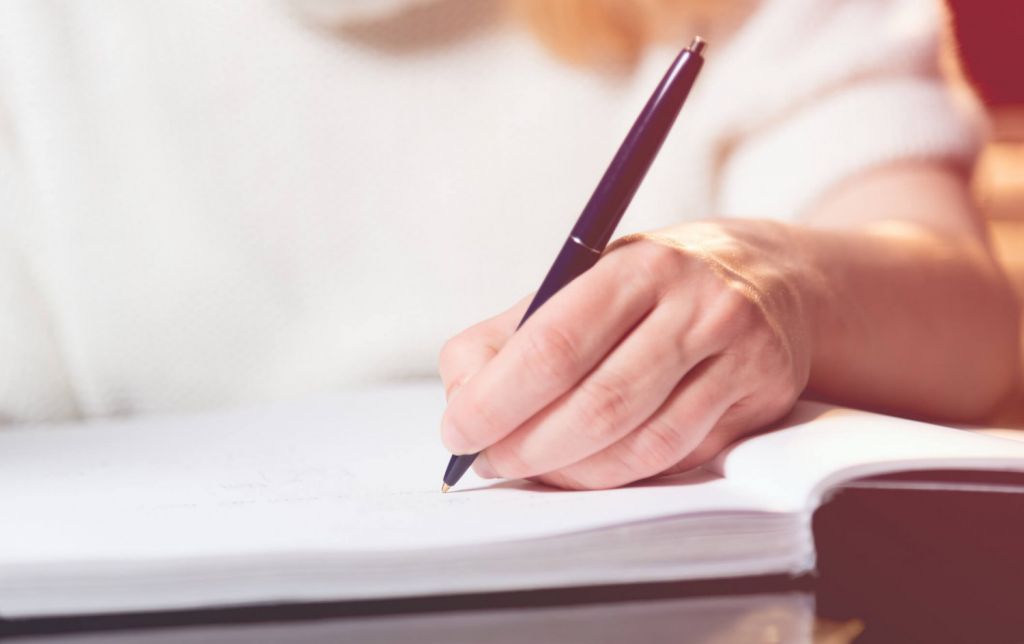
Whether you need people to be able to read your handwriting professionally or just want to have neat handwriting for yourself, here are 50 tips to improve your handwriting instantly.
My top 10 tips for improving your handwriting:
- Adapt your letters to your natural handwriting motion
- Learn to maintain a rhythm
- Use your natural slant
- Start using a fountain pen with a thick grip section
- Make sure you enjoy to write
- Don't apply too much pressure
- Close the top of your letters
- Embrace that your handwriting is always evolving
- Write on blank instead of ruled paper
- Pick the right hand for you
But there are a lot more quick wins to be had, so read on to get a lot more actionable tips you can implement straight away.
This is a running list with every idea or tip I've ever encountered on handwriting improvement, so it might not be exactly 50 ideas. I'm constantly adding new tips and ideas, so if you want, you can bookmark this article and come back to it.
Most guides and tip lists out there focus on practice. Sure, you need plenty of practice. But there are so many other non-obvious tricks I can think of that are just a simple change in tools or perspective. The four main categories to improving your handwriting are, in my opinion:
- Change of behavior
- Changing tools
- Different perspective
- Practice
Why perspective and tools, and so on?
Well, there is one ninja secret to improving your handwriting that only insiders know. And you need the right knowledge and tools to do it. It all boils down to this one thing:
The secret to improving your handwriting is writing more relaxed.
That's it. If you optimize for relaxation, your handwriting will improve dramatically.

I've tried to think of as many actionable tips to help with this I could possibly think of. Some of them you'll already know. But there will also be a lot of nuggets that are not obvious at all. Let's jump in.
Note: when I mention 'hand', I'm trying to sound more sophisticated. Hand is the word insiders use for handwriting.
Embrace that your handwriting is always evolving
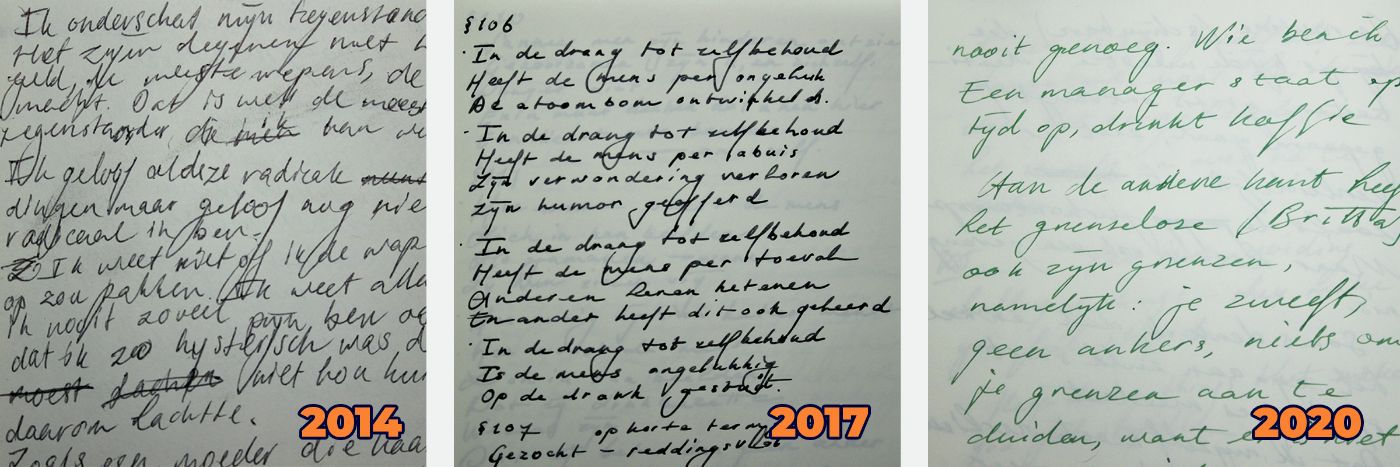
One of the main things holding me back in the early days was my fixed mindset on writing. I thought that I needed to be consistent above all. That's a major brake on any development, especially with handwriting.
Wanting to be consistent means you won't try out new things, which means you won't find better alternatives to what you're doing already, which means you won't improve.
The day I realized this was the day I started to make massive jumps in the quality of my hand.
Slow down your writing speed
A lot of bad handwriting starts with wanting to write too fast. When I learned to slow down my writing, from beneath my messy hand arose a pretty decent hand. A lot of bad things start with a lack of attention.
You also don't want to go to slow. If you're a very slow writer, that might be the cause of illegible handwriting. Attention is good, but obsession is bad. There's a certain momentum to writing that will help you keep consistent spacing and a consistent baseline. But writing without a hurry will definitely help your handwriting become more legible.
Pay attention to what letters you like and dislike to write
Before changing anything, I suggest to simply pay close attention during your normal, everyday writing.
What letters do you like to write? Which do you particularly dislike writing? Write both down. This will help you figure out how to change your handwriting over time.
Find out what motion your hand likes making
Our hands like to make one motion, and despise making another. I've found that for me, I enjoy making the counter-clockwise circular motion. On the other hand, my hand dislikes drawing clockwise circles.

The best way to figure out what you like, is simply drawing connected circles, clockwise and counter-clockwise. Notice where you stumble. You could also use your notes on your favorite and least favorite letters.
Once you understand what motions your hand likes to make, you can adapt your handwriting—more on that in the next heading.
Let your hand repeat the same motion
Once you know what motions you enjoy making, you can start changing your handwriting accordingly. I've found that I enjoy writing the most when all letters and movements are made up of the same circular, counter-clockwise motion.
I recommend analyzing your current handwriting and finding any letters you particularly dislike. Now check the motions you dislike. I'm guessing they overlap. You probably need to make a motion you don't really like to make in the first place. For 90% of the letters I disliked writing, that was the case.
Now we simply need to find a way to just make the motion we naturally like making.
Design letters that fit your natural handwriting motion
For me, designing new letters really was the fun part. I really enjoy trying out new movements and trying to program them into my muscle memory. I'm a drummer by education, so that's what I did.
I suggest taking a sheet of paper and writing just one letter you dislike. Then, analyze which movements you've made.
Once you find the point of frustration in the letter, try to think of ways to change that movement. If you can't think of it, go through handwriting examples images online.
Picking new letters is a matter of 'tasting' them. Feel whether you enjoy its motion more or less than the old one.
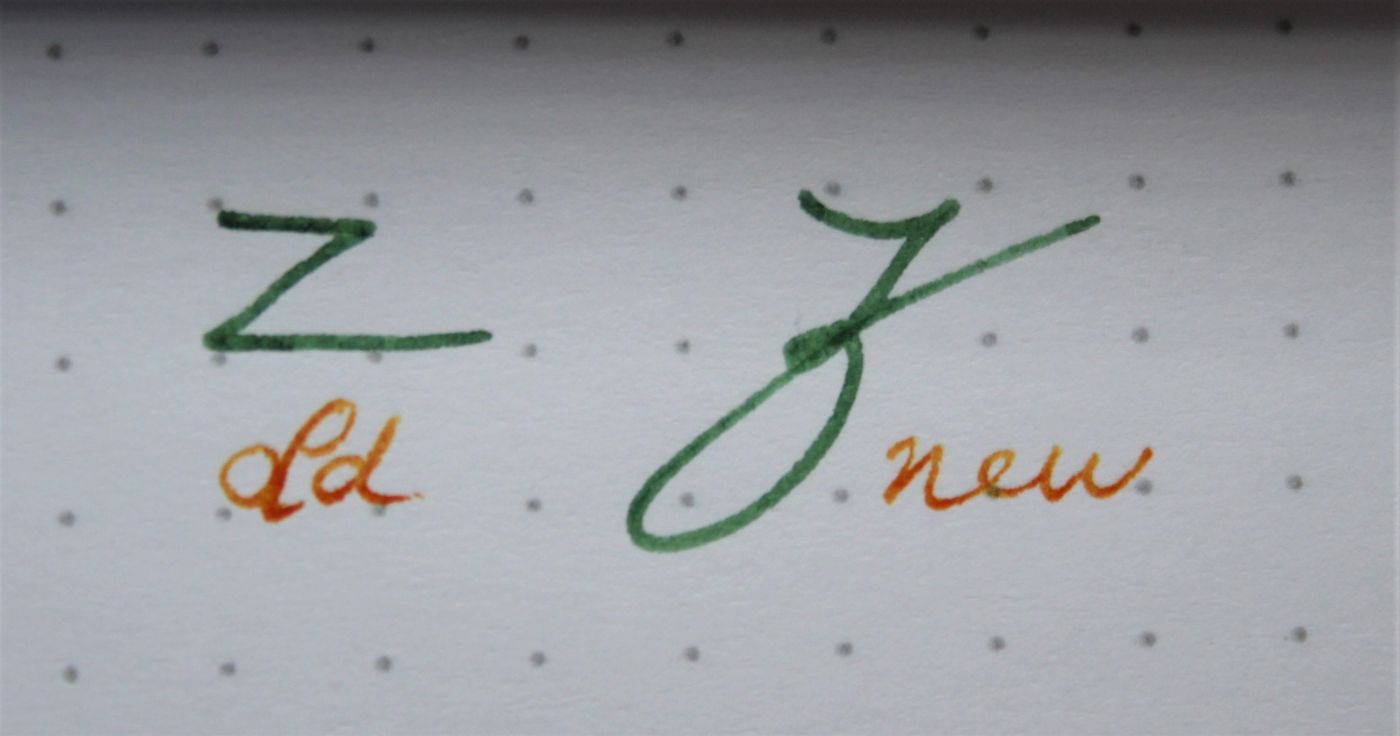
You might have to repeat the letter a couple of dozen times before you can really tell. Since your hand isn't yet used to this new letter, it will always feel strange at first.
Maintain a rhythm
One of the most important aspects of good handwriting I never hear anybody talk about is rhythm. That's why I am not a great fan of writing in print.
To get the most natural and relaxed hand possible, you want to maintain a rhythm. Ideally, you make a continuous motion, without interrupting.
As with music, the most important thing is to keep on playing. Musicians know this: it doesn't really matter whether you mess up or play the right notes. As long as you maintain the rhythm, it will sound like music.
This also means your letters have to facilitate a continuous motion. Sharp angular motions, or ornamentations that require you to suddenly change direction, will disrupt the continuous motion, and frustrate your handwriting because of that.
However important rhythm might be, my handwriting is nowhere near a continuous motion. I'm still changing out letters every now and then. But that's okay! Over time you'll notice what strings of letters you've enjoyed, and I'll bet they used continuous motion.
Focus on your spacing
Good musicians know what notes to play and how to play them. Great musicians know how to play the space in between the notes.
It's the same with handwriting. For the fastest results, focus on the spacing instead of the letters. There is nothing that improves legibility more than consistent spacing. I have a couple of very good penmanship exercises that will help you with that and are also fun and mesmerizing. I'll show them further on.
To hit home the idea of the importance of spacing, here's a verse of the Tao Te Ching called 'The Empty Space':
Thirty spokes join in one hub
In its emptiness, there is the function of a vehicle
Mix clay to create a container
In its emptiness, there is the function of a container
Cut open doors and windows to create a room
In its emptiness, there is the function of a room
Therefore, that which exists is used to create benefit
That which is empty is used to create functionality
Verse 11, Tao Te Ching
Use a dot pad for a while
If you're working on spacing, I can recommend using a dot pad for a while. These notepads have a dotted grid of 5mm instead of rules. It will help you with both horizontal and vertical spacing.
I use Rhodia's Dot pad, which you can get on Amazon.
Learn these simple penmanship practices
Most exercises are boring, and, pardon my French, dumb. Sure, you need to practice. But most exercises are simulating situations that will never happen in real life, without adding anything really. One of those exercises I hate is worksheets where you repeat the same letter over and over. What's the point in that?
So whenever an exercise comes around that is fun to do, I jump on the opportunity.
One of my favorite penmanship exercises is this simple spacing exercise:

And then rotate the paper and fill in the margins with the same letter:
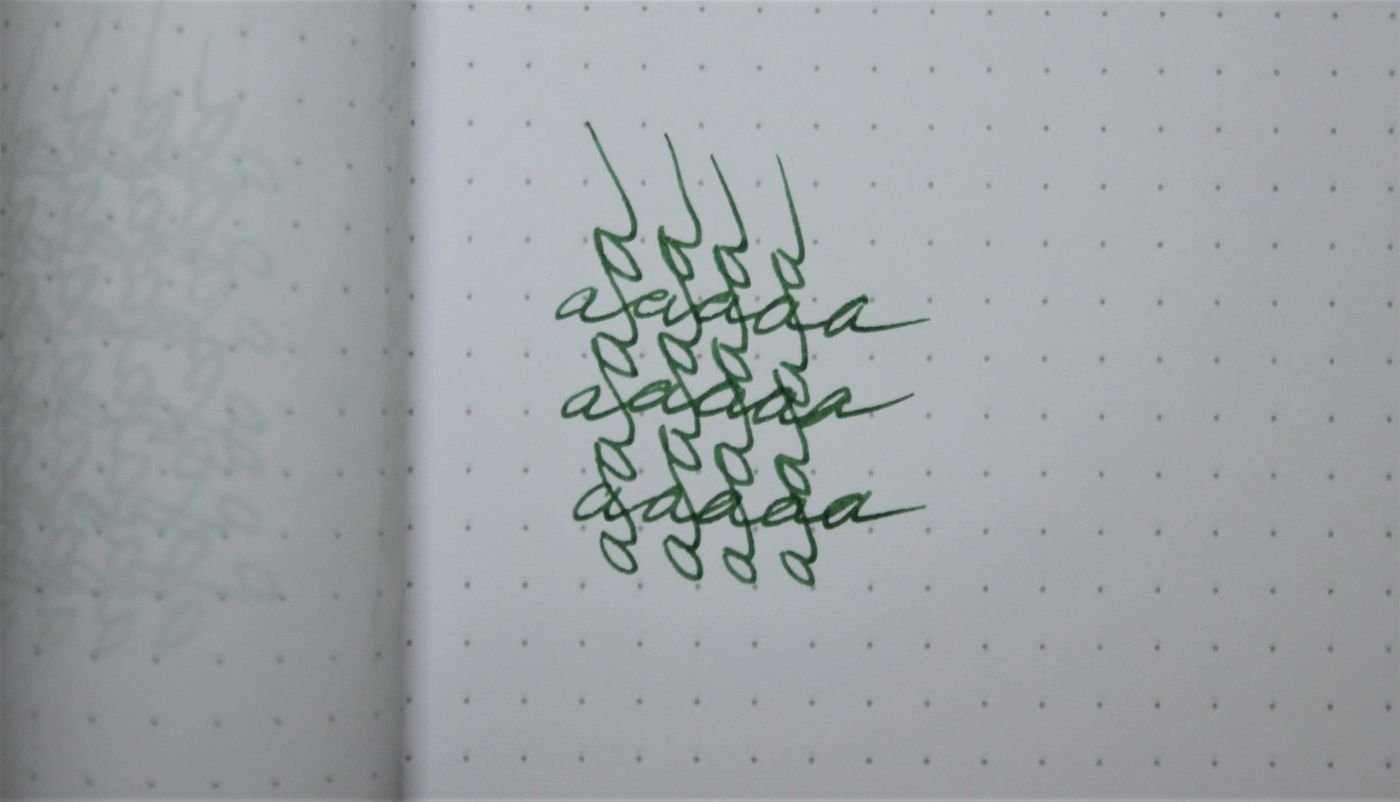
This exercise will help you develop better spacing, but also more consistent proportions. Each letter should be as high and wide as each spacing and vice versa.
You can practice with any letter, and it will help with spacing both horizontally and vertically a lot. It's also mesmerizing to look at, I think.
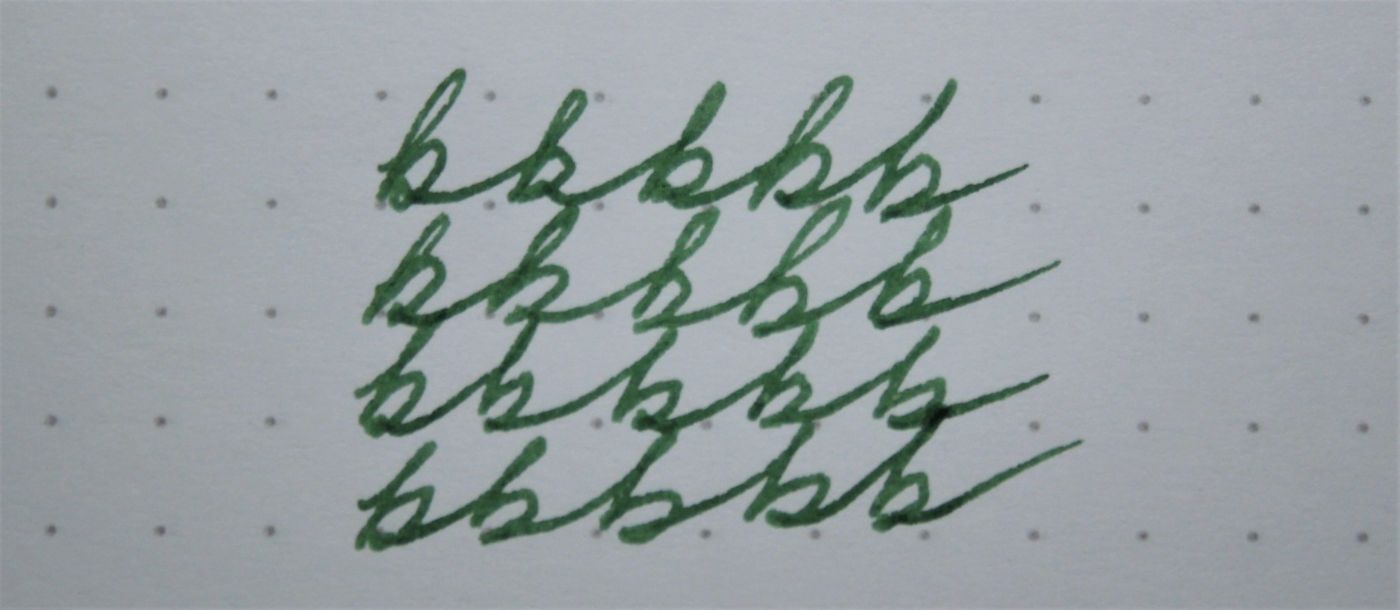
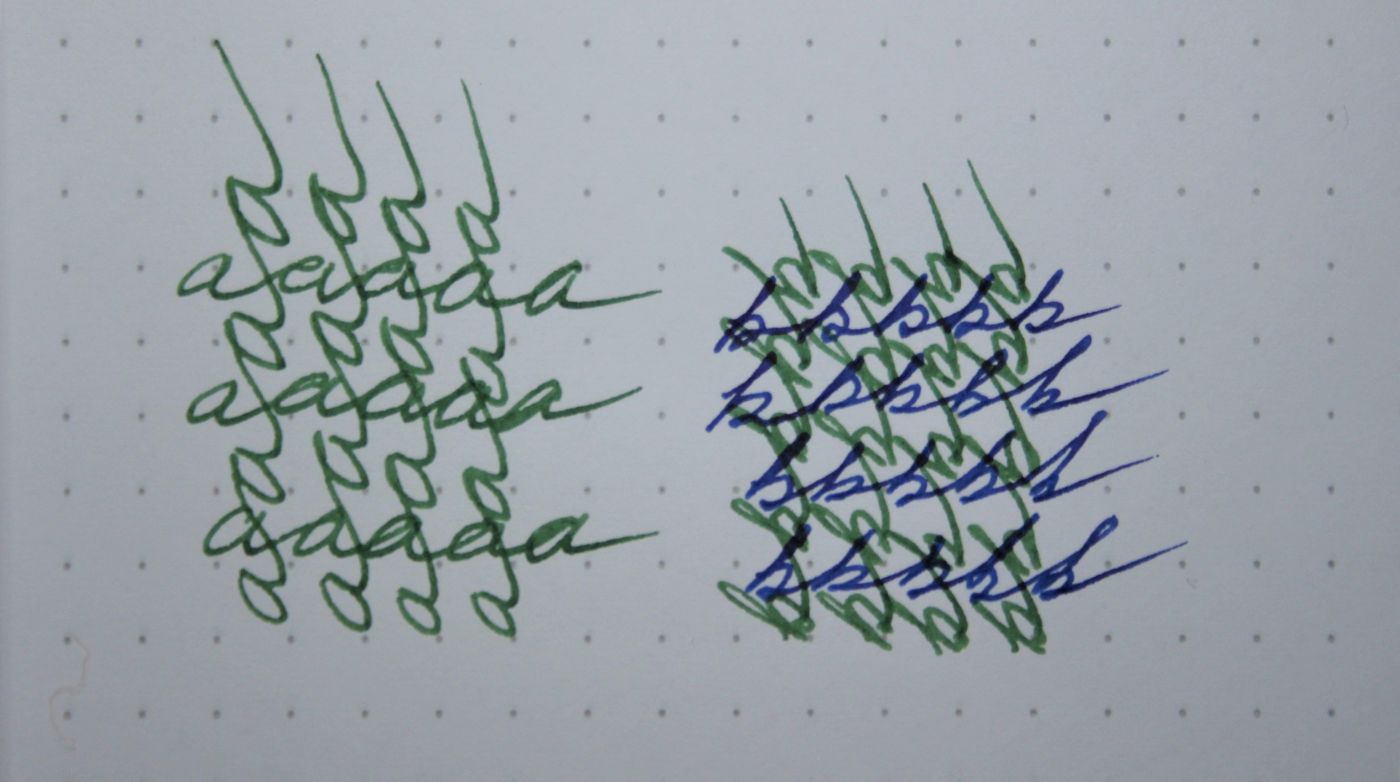
I picked it up on YouTube from gourmetpens, although I forgot which video exactly.
If you want to learn all my favorite penmanship exercises, you should read this article.
Make sure you actually enjoy writing
Some people make writing something holy, creating rituals and routines that need to be adhered to. I don't like that at all. I want to like to write by hand, so there are no rules.
I have pens lying around everywhere. I switch ink color whenever I feel like it, sometimes in the middle of a sentence. I have multiple notebooks, sizes, types, notepads, and so on, everywhere. I write horribly, so hastily and untidy no one will be able to read it. I write attentively when I feel like it. If I don't feel like writing, I don't.
I make sure I like to write. I don't want to impose fictional rules on myself.
This "strategy" has helped me to improve my handwriting over the years the most. If you like to write, you'll get used to writing a lot, and your handwriting will become more and more natural over time. Your handwriting will become more personal. And you'll love your handwriting, which will mean you'll love to write. And on and one the circle goes.
Don't apply too much pressure
When you apply a lot of pressure, your hand will cramp up. To get the most natural hand, you'll have to write as relaxed as possible. It helps with consistency and spacing, but also with maintaining that rhythm we've talked about.
I used to work my pens (and paper) pretty hard. I pressed down quite hard, I imagine. No wonder: I used slim ballpoint pens.
Stop using ballpoint pens
Ballpoint pens might be more modern, that doesn't make them better. In many ways, fountain pens are still the superior pen. They require very little effort and write under their own weight. That's one reason, but there are plenty more.
I recommend at least trying out a fountain pen once. Most stationary stores allow you to test one out without any obligation of buying it. You can get yourself a very good fountain pen that will last you a lifetime for around $15.
If fountain pens are not for you, consider getting a premium ballpoint pen at the least. Those are also pretty affordable. Gel pens are also good. The wetter, the better.
Giveaway marketing pens might be cheap; they're also the worst writers in the world. However, a lot of people write with nothing else but cheap disposable, dry, skippy ballpoints.
Get a thicker pen

Those ballpoints I mentioned have another big disadvantage: they're super slim. Slim pens are not good for your pen grip. Unless you have really tiny hands, a thicker grip section will be better for most people.
With a thicker section, your grip will loosen, and your hand will relax, which means better handwriting.
Relax your grip
Anything you can do to loosen your grip will help with improving your handwriting in so many ways. You don't really know until you've tried a very wet, light, and easy-writing pen. Most people never experience this and learn to cramp up when writing. I think this is why most people don't like to write by hand.
However, nearly everyone I know that has learned to relax their grip enjoys writing by hand. It starts with a fountain pen; it ends with writing letters.
Write bigger to increase legibility
Another tip that really helps when first starting out with improving your hand is to write bigger. Larger letters help to relax your grip further, but it also programs your muscle memory. Making large motions will help with internalizing smooth movement.
Many people write tiny. Perhaps we think it's neater. However, graphologists (handwriting experts) think it is because of frugality: you don't want to waste paper. It could also mean you're timid and don't want to take up a lot of space. Whichever it is, it doesn't sound good.
Learning to take up space not only helps you relax your hand, but it will also help your overall posture and improve your confidence in your handwriting.
Learn the ergonomically correct writing posture
This is an obvious one that many people mention, so there might be something to it.
Your pen is an extension of your posture.
Sitting the right way will help with finding a more natural hand in seconds.
The correct posture is very simple:
- sit up straight with your shoulders relaxed
- your elbows should be in a natural, 90-degree angle facing outward slightly
- your wrist should be loose and straight
- do not rest on your wrist
- use your forearm to make large motions
Here's a good visual explanation in a video I've made:
Use your natural slant
I once read in a graphology book (the study of handwriting) that we naturally want to write at an angle. I don't know why, but that pleased me.
Nowadays, many people write in print to take study notes, and so on. Print is easy to read, but it forces you to right your letters while your body wants to write with a slant.
I recommend trying to find your natural slant and allowing it for a while. A natural slant is anything between 5 and 15 degrees.
I might overdo it: I turn the paper dramatically. It seems as if it rotates a couple of degrees more every year (almost at a vertical position now).
Adapt your line-height to your hand
I've once searched for blank notepads for a week before ordering an entire box. I couldn't find any anywhere. It was quite disturbing.
'Why does this matter?' you ask.
If you have a higher hand than most people, you want to increase your line-height as well. Overlapping loops will become illegible very quickly. The quick fix is to adjust your line-height to your hand's height.
You want to choose a line-height where your loops don't overlap. It's either that or shortening those mouthwatering curls and ornamentations!
Since most journals and notepads are ruled nowadays, it can be difficult to use the right line-height. Everybody's handwriting differs, so the standard ruled paper doesn't apply to a lot of people.
The solution is finding good quality, blank paper to use. I love Rhodia Le R. It's great paper. It's all I use nowadays. Here's my proof:
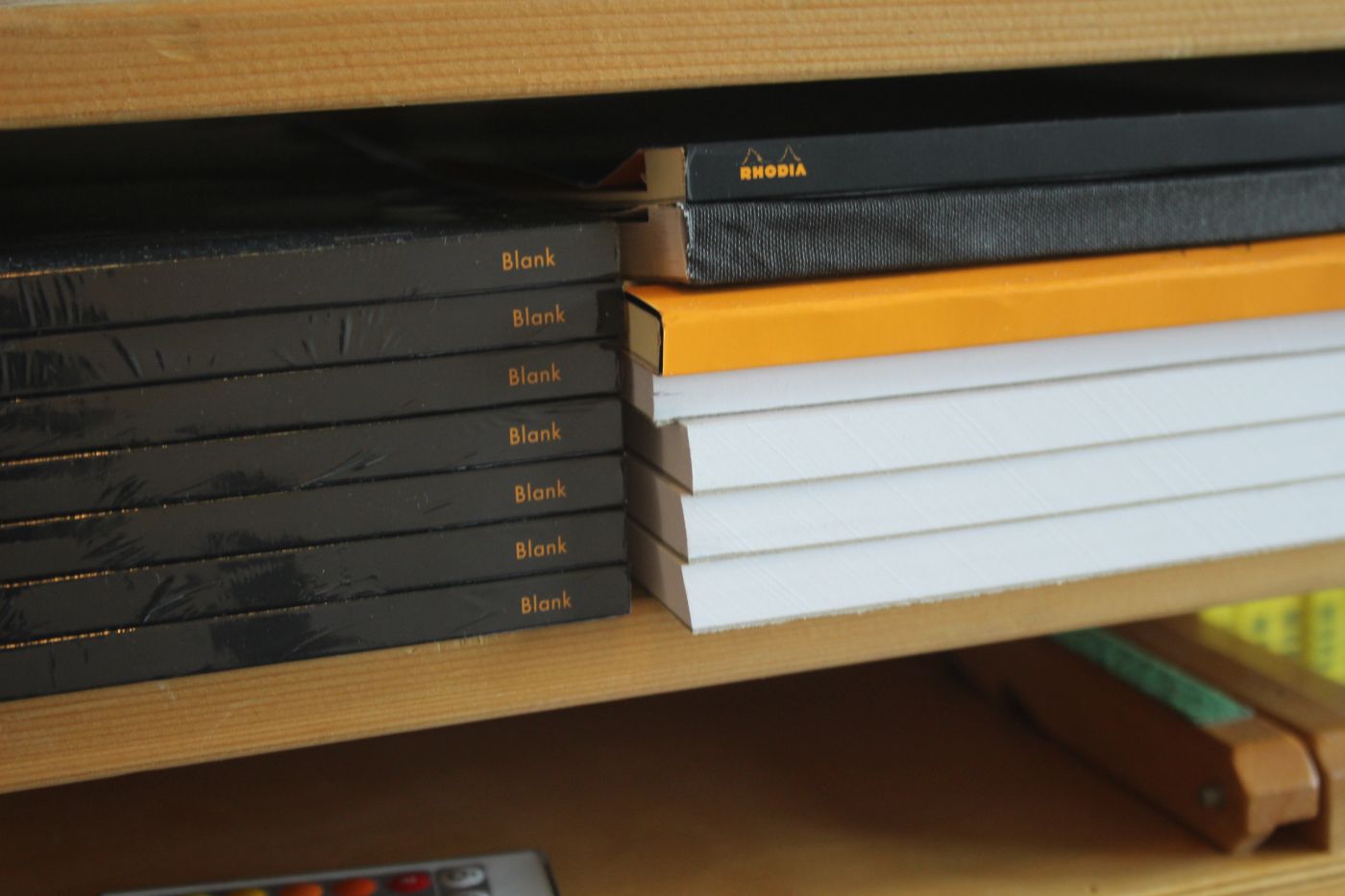
It's a bit more expensive, but it's the single investment in your writing experience that will make the most difference for the smallest price. Check it out on Amazon.
Keep moving forward
We've already touched on keeping rhythm. In the same way, you want to keep the forward momentum going. This realization ties into a couple of other points I'm going to make further on. You don't want to look back, touch up, or judge your own handwriting while you're writing.
You can do all of that later.
For now, focus on keeping going, without getting frustrated. Your hand will become tidier over time, and there will be plenty of time to write like a superstar now that you're gaining experience.
The forward momentum and rhythm are the most important part. Your arm needs to get used to the fine motions you use when writing by hand. Your body will figure it out automatically, as long as you keep writing.
Simplify your handwriting
You doctors out there know what I mean (I suppose a lot of physicians read my website). Simplify your hand until only a horizontal line remains.
Well, that might be a bit much, but we definitely want to keep simplifying our hand over time. As a young lad, I had these horrible Munk-like ornamentations that made absolutely no sense in the larger scheme of things.
Reflect on your handwriting continuously
In order to simplify, you want to analyze your handwriting every now and then and check for unnatural loops, hooks, curls, and ornamentation.
Keep ditching what you don't like and what looks unnatural.
I've ditched a lot of letters and stylizations, even once I've added through painstaking repetition. If it doesn't fit, ditch it.
Remove any directional changes in your hand
If your entire hand is in a counter-clockwise circular motion (like mine), you don't want to loops and ornamentations that crudely oppose that direction.
The most common example of this are hooks. Graphologists think that handwriting with a lot of hooks is the sign of a madman or serial killer. Don't be suspect: ditch the hooks.
Fix the tops of your letters
Apparently, people recognize letters by their tops. If you make sure your tops are on point, your handwriting will be much more legible.
The two largest and easiest improvements are closing the tops, and using clear connections between letters if you write in cursive.
Use a bolder pen at first
As a drummer, there was this training concept we used all the time. When I rehearsed for shows and new songs, I started out slowly, making very large and dramatic motions.
I used the full range of motion.
Once my muscles understood the motion, I made it smaller and smaller until it became tiny.
You want to do the same thing with your handwriting. Start big, end small.
If you have trouble making larger motions, use a pen with a broader nib. This will force you to make large movements. I switch between broader and finer nibs all the time, and my handwriting increases or decreases in size accordingly.
Larger motions will help you circle in on finer motions. By training your muscle memory in a big way, you'll get better at small dramatically. It's the best way to program your muscle memory.
Copy handwriting you admire
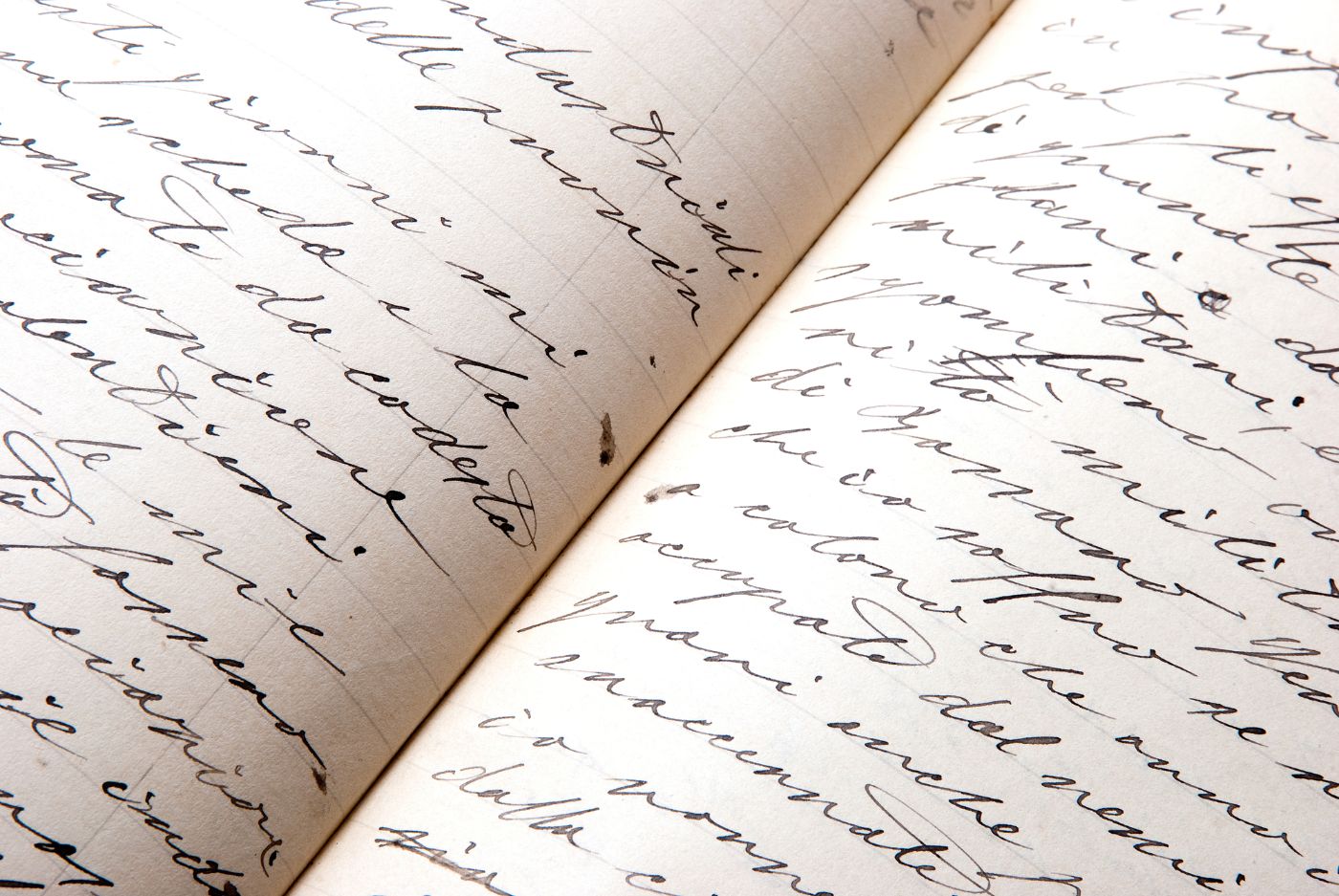
If you see something you like, copy it. This could be individual letters, connections, ornamentations, and so on.
I've copied capital letters especially since they can be so hard to get to feel right. But some people find cool ways to connect two specific letters, and it's fine to copy them.
For one, there is no copyright protection for handwriting. Secondly, your entire hand is already copied from others' examples anyways. So go ahead and steal whatever your heart desires.
Avoid getting overly self-conscious about your handwriting
With all this talk of improvement, it's hard not to get super self-conscious when you write. Here's an important warning: try not to think about it. Remember, our goal is to write as relaxed as possible. This will automatically lead to better handwriting.
If you try to force improvement, you'll only cramp up, and cramping will lead to nothing but typographic disaster.
Invest in a good pen
One of the simple tool changes I'd make is investing in a good pen if you haven't already. I recommend something that writes easily, whatever that means for you.
For me, and most others, this means a pen with a thick grip section that is not too heavy, and writes effortlessly. In other words, any fountain pen over $15.
Use quality paper
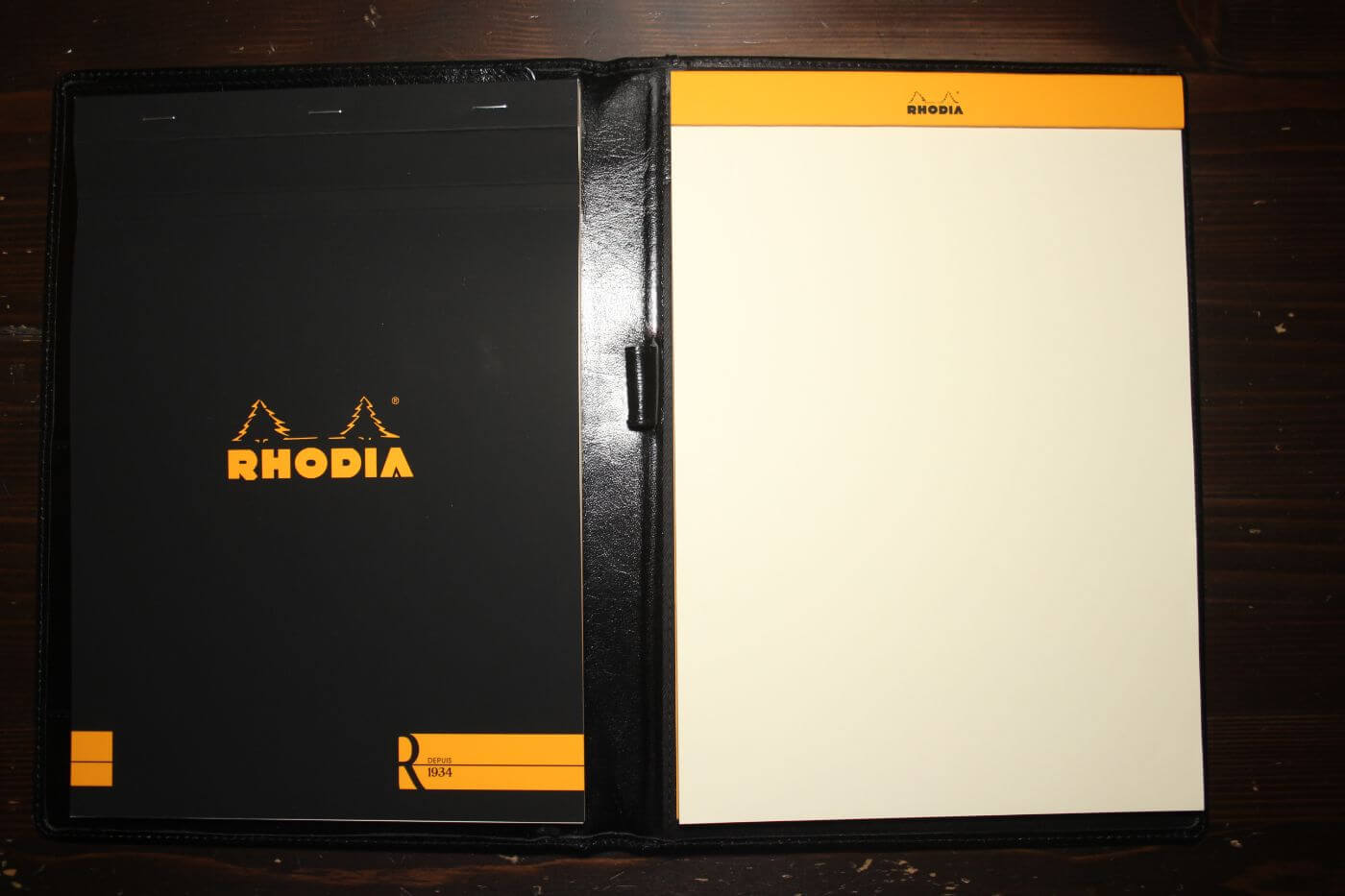
I already touched on this, but I want to mention it separately as well. Good paper will help your writing regardless of the pen you use.
Most people use cheap copier paper. That's 60 grams paper that feathers like crazy (feathering is when the ink runs). It's rough and very textured.
It works okay with ballpoints, as ballpoints are designed to work on cheap paper. You'll notice the difference when you use a fountain pen, though.
You can get all kinds of paper. I prefer something very smooth. Rhodia's Ivory Satin paper (90gr/m2), for example.
Some brands that have great paper:
- Rhodia
- Clairefontaine
- Leuchtturm
- Tomoe River
Use ink you like
If you've never touched a fountain pen, this sentence will make no sense to you. If you use a fountain pen, however, you probably have boxes full of ink bottles at home.
Here's my modest stock:

If you like to write, you'll write more, and your handwriting will improve.
I don't really believe in soul-crushing practice for practice's sake. I'd rather enjoy writing so much that I'll pick up a pen more often naturally.
So use stuff you like to use. It sounds so simple, but so few people actually do it.
'But well, it all costs money.' Sure, but I think that my entire collection of ink cost me about 60 bucks. For a tenner, you could get five ink samples, which will get you through a year of writing. People overestimate what fountain pens cost because they look expensive and decadent.
Try it out. Use stuff you like. See where it takes you.
Understand the different aspects to good handwriting
After all this talk about mindset and tools, let's talk about the most discussed aspect. Technique. So technically, what are we actually trying to improve?
Good handwriting consists of:
- consistent spacing
- closed tops
- clear connections
- a clear baseline
- the right line-height
- simple and natural letters
As you can see, spacing is as much a part of it as the letters itself.
Understand your handwriting style
There are multiple styles of handwriting. To understand your own style better, let's quickly go over the styles there are. There are basically three styles:
- print - unconnected
- cursive - connected
- calligraphic - ornamental
Most people nowadays write in cursive, since it's the most legible. It's also the most impersonal. It's the human printer, in a way:
It's also the one handwriting style that is perfect for fine liners, markers, technical pens, and ... ballpoints. Dry pens will skip on, and connecting letters while applying pressure isn't great.
Cursive, however, is the fastest way to write, if you become good at it. And it's the most personal.
Personally, I write in a hybrid print/cursive style, with some letters connected and some separate.
Pick the right hand for you
Knowing what you're actually trying to strive for is crucial in improving. Do you want to write in a pure cursive? Then, it's back to basics. You'll have to print out exercise sheets you used to use in grammar school.
Knowing who you'll write for and in what context is also critical in picking the right hand. Will you write longhand in your journal for you to read and no one else? Or will you fill out inventory forms at work?
Typically, I'd recommend cursive for personal handwriting and print for professional handwriting.
Knowing what tools you'll use is the last essential part of picking the right style. If you plan to use fountain pens, it's worth (re)learning cursive. It's just a perfect match. On the other hand, if you'll be using pencils, you might want to write in print.
Don't be afraid to do something badly
Improving anything is a delicate mix of trying your best and not caring about doing it badly. If we focus too much on trying hard, we'll get frustrated before achieving meaningful results. So consider doing it badly at first and not caring too much.
Look at other people's handwriting
The best way to find new ideas for your own handwriting is by looking at other people's hand. I've found numerous ideas for capitals, and I recently copied sbrebrown's lowercase 'z' - which is the classic cursive z:

Where do you find examples? Apart from Google Images (which is not a bad place to start), you can:
- check old letters from people you admire
- watch fountain pen review videos on YouTube
- watch study videos
- check graphology books and websites
But the best way to collect handwriting examples is by writing letters to friends and family and collecting their responses.
Ditch what you don't like
Sometimes I program new letters into my muscle memory, only to find I still don't like them after a couple of months. Generally, those new letters are better, but not always.
If a letter or connection continues to frustrate me, I will be on the lookout for a replacement. And as soon as I find it, I'll just start replacing the old with the new design in my everyday writing.
I don't really practice. I just try to remember to use the new letter. I don't care if it doesn't look good at first.
Relearn cursive handwriting
When I got into high school, I only wanted to ditch those child-like connected letters from grammar school. So I stopped connecting my letters altogether. I know, I was a rebel.
If you don't know cursive already - or have ditched it as I did - I recommend trying to relearn it. For me, it has sped up my writing tremendously. It also simply was the best hand for me. I already wrote in a cursive manner, with a slant and a lot of forward momentum. When I started using fountain pens again, there just wasn't any reason not to write in cursive. It is the appropriate style for me.
Relearning it has been easier than I thought. I still don't like the s-ess, so I use my adolescent s instead. I'm nowhere near a pure cursive, and I might not want to, but ignoring my false pride and seeing cursive for what it is (a great handwriting style for fast writers), has helped my handwriting tremendously.
Write on blank instead of ruled paper
Writing on blank paper will seem a bit counterintuitive, I know. Most people assume you'll need more tools, not less, when trying to improve. But I think ruled paper is responsible for lazy writers all around the world.
Joking aside, I've found that writing on blank paper for a decade has really improved my handwriting. How? Well, it forces you to develop your own baseline. Taking off the side wheels and relying on your own judgment will improve the firmness of your handwriting over time. It's amazing how straight you can write freehanded, really.
Also, if you have a higher-than-average hand, you can now use your own line-height. No more overlapping loops.
Print out exercise sheets and practice
I hate exercise sheets and never use them. I get bored with them quicker than a dog will eat an ice cream. That's my opinion, and now it's out of the way.
For a lot of people, however, exercise sheets are a great way to improve their handwriting. If you are unlike me (undisciplined and unfocused), you might actually appreciate the repetition.
Repetition is good. It's really good. As a professional drummer, I was all about repetition for a couple of years. It's the only way to train your muscle memory properly. But there's a reason I was constantly broke while gigging as a drummer. I'm no good at repeating something over and over again.
If you are, however, here is a website where you can print out your exercise sheets for free.
Test ridiculous fonts using Dafont
It's fun to go through Dafont or any other font library and just pick some ridiculous font and try to replicate it. There are loads of ideas to be found in those libraries.
I don't recommend forcing yourself to use an entirely foreign style. Your handwriting should be an amalgamation of your character. But picking elements, single letters, or ideas for connections or ornamentations is a great way to improve your handwriting over time.
When you see a hand you like, practice it
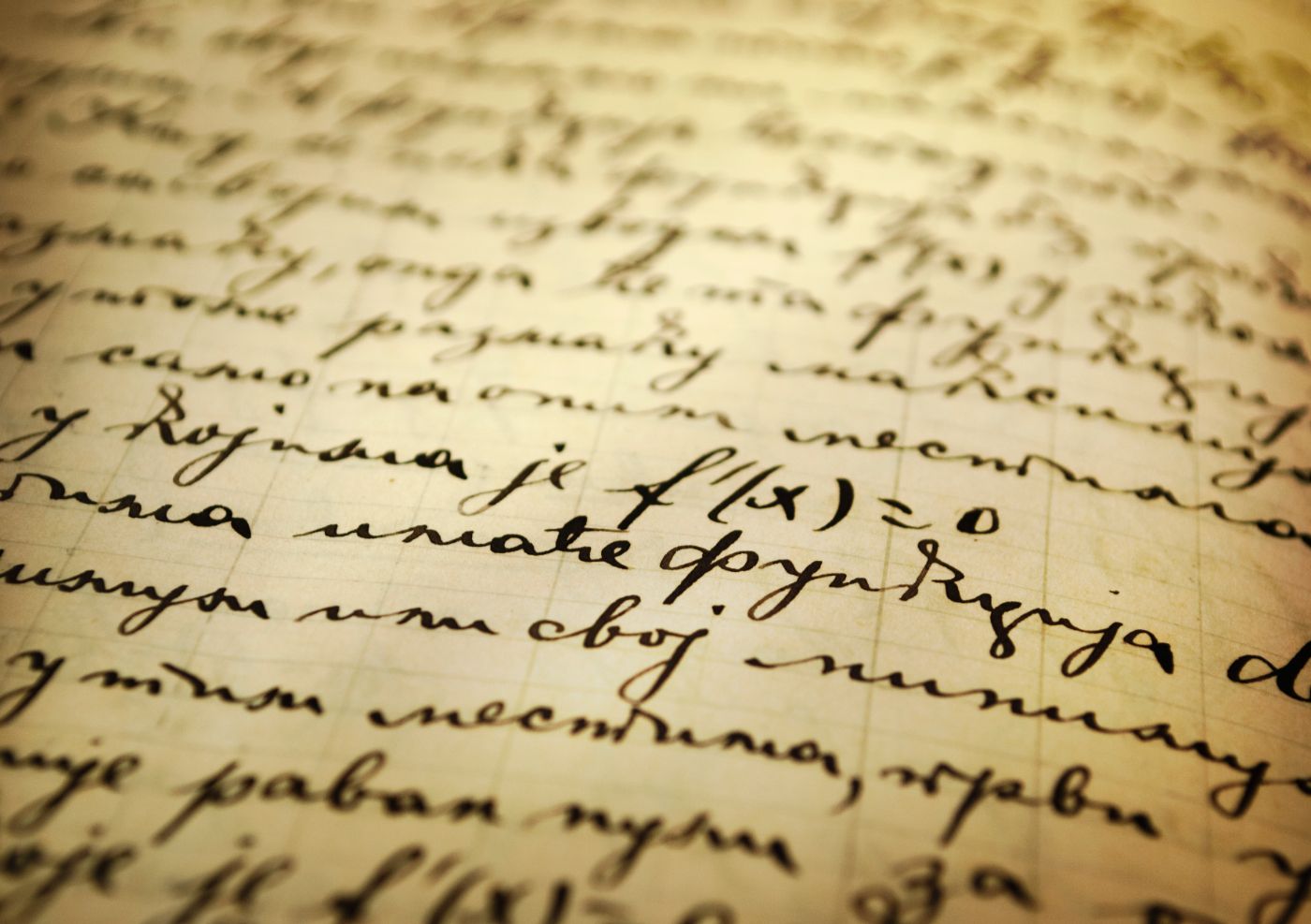
In order to find elements you like better, you will have to imitate others' hand. Whenever I encounter an element I like, I quickly practice it a dozen or so times on a straying piece of paper. It's the only way to tell whether something feels better than what you did originally.
Try out new letters in your everyday writing
If it does feel better, however, I try to remember using it throughout my everyday writing. My journals are filled with obvious transition periods where I frantically switch between letters, trying to remember to use the new one.
However, it always lands. I'm actually surprised how quick you get at implementing a new letter once you get comfortable with changing up your handwriting. I just recently learned an entirely new 'z' (the one I mentioned before) in just a week or so.
This was a letter I initially thought would take me months to master, simply because it was such an odd shape.
Make writing a part of your everyday life
Now for the most obvious of lists on improving your handwriting. I'm actually proud I've postponed this tip for so long.
You want to practice a lot. But practice doesn't have to mean repeating those boring worksheets over and over again. A better way is to take things you'd do anyway, but now take out your favorite pen and write them by hand.
Here are some ideas and things I write by hand nowadays:
- Write your grocery lists by hand
- Write notes to your friends or spouse
- Keep a journal
- Write out business ideas
- Copy recipes you like (tip: use waterproof ink)
- Plan your calendar by hand
Did you find the answer to your specific question?
👍 24 👎 6
Leave a comment